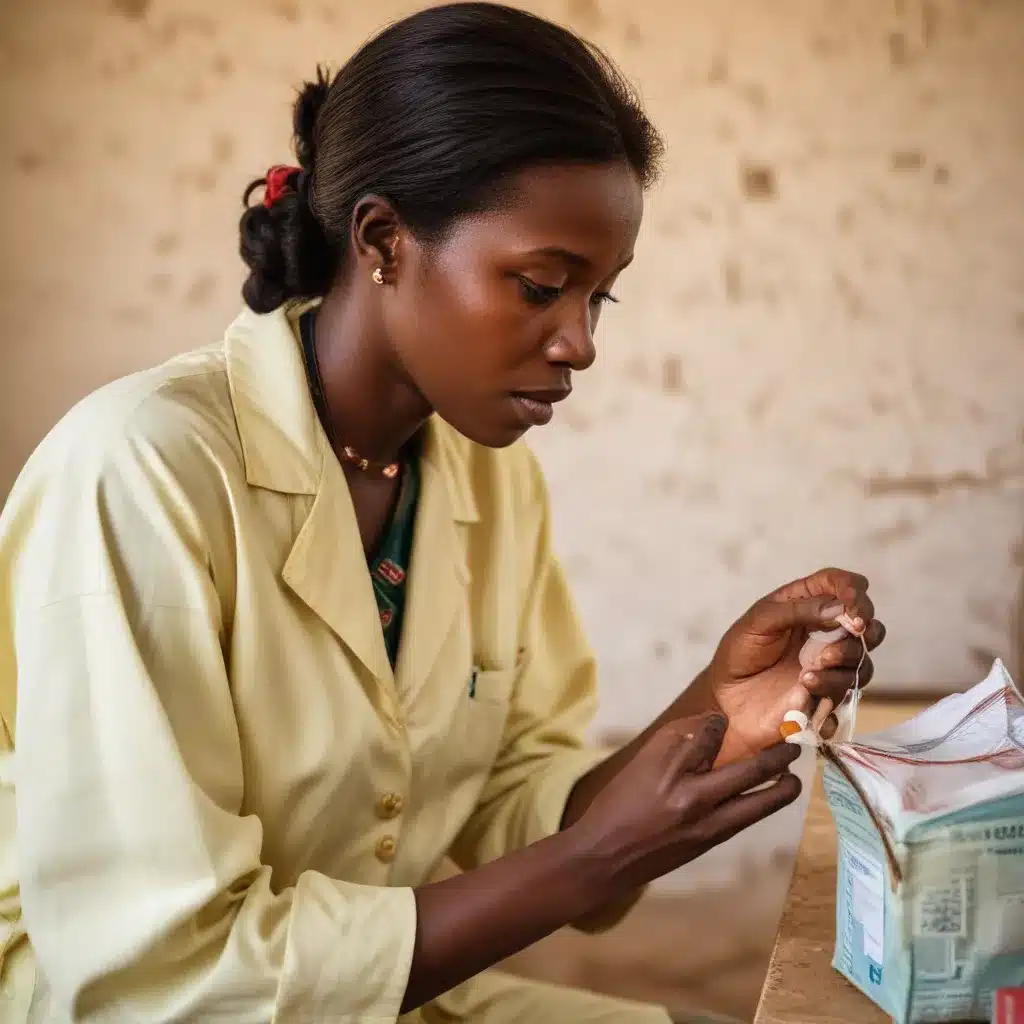
The Importance of Doxycycline Prophylaxis
The prevention and treatment of skin and soft tissue infections (SSTIs) is a critical issue in communities where malaria is endemic. Malaria elimination efforts can be significantly hindered by the burden of severe SSTIs, particularly those caused by invasive gram-negative pathogens associated with saltwater exposure.
A case in point is the experience of the United States Naval Special Warfare (NSW) trainees in Coronado, California. These individuals undergo intense physical training during the “Hell Week” portion of their regimen, which involves continuous exposure to cold, wet environments. Prior to 2015, the NSW training program saw a concerning rise in severe SSTIs among trainees, some of which were linked to saltwater-associated bacteria like Shewanella algae and Vibrio species.
In response, the Naval Special Warfare Center (NSWCEN) implemented a prophylaxis protocol in September 2015, providing all trainees entering Hell Week with daily oral doxycycline (100 mg) for 8 days, starting 2 days before the training began. This intervention aimed to reduce the incidence and severity of SSTIs in this high-risk population.
Evaluating the Impact of Doxycycline Prophylaxis
Researchers conducted a retrospective analysis to assess the effects of this doxycycline prophylaxis program on SSTI outcomes among NSW trainees from 2013 to 2020. The key findings of this study include:
Decreased Hospitalization Rates for SSTIs
Prior to the doxycycline intervention, the hospitalization rate for SSTIs was 1.37 admissions per 100 trainees. After the prophylaxis program was implemented, this rate decreased significantly to 0.64 admissions per 100 trainees (p=0.036).
Reduced Severity of SSTIs
In addition to the lower hospitalization rates, the researchers found that the percentage of diagnosed SSTIs that required hospitalization decreased from 18.4% to 7.2% (p=0.009) after doxycycline prophylaxis was introduced. The average length of hospitalization also dropped from 9.01 days to 4.33 days (p=0.034).
Stable Overall SSTI Incidence
Interestingly, the overall incidence of SSTIs diagnosed by NSWCEN medical staff remained relatively stable, fluctuating between 7.42 and 8.86 cases per 100 trainees before and after the prophylaxis program (p=0.185). This suggests that the doxycycline intervention primarily impacted the severity of SSTIs rather than the overall infection rate.
Understanding the Rationale for Doxycycline Prophylaxis
Doxycycline was chosen as the prophylactic agent in this context due to several key factors:
Efficacy Against Saltwater Pathogens
Doxycycline is considered a first-line treatment for infections caused by saltwater-associated bacteria like Vibrio species, which were implicated in the severe SSTIs among NSW trainees. Its broad-spectrum activity makes it an effective option for preventing a range of potential SSTI pathogens.
Favorable Safety Profile
Numerous studies have demonstrated the general safety and tolerability of doxycycline, even with prolonged use. While minor gastrointestinal side effects are common, severe adverse events are rare. This makes doxycycline a suitable prophylactic option, especially for otherwise healthy populations.
Potential for Preventing Resistance
The researchers did not find any concerning patterns of doxycycline resistance among Staphylococcus aureus isolates from NSW trainees over the study period. The intermittent, short-term nature of the prophylaxis may have helped minimize the selective pressure for resistance development.
Practical Considerations
Doxycycline’s once-daily dosing, ease of oral administration, and relatively low cost made it a logistically feasible option for the large-scale prophylaxis program implemented at NSWCEN. The directly observed therapy approach also ensured high adherence among trainees.
Broader Implications for Water, Sanitation, and Hygiene Interventions
The experiences of the NSW training program offer valuable insights for the water, sanitation, and hygiene (WASH) sector more broadly. This case study demonstrates the potential benefits of targeted hygiene interventions in high-risk populations, even when the overall incidence of infections may not change dramatically.
By prioritizing the prevention of severe, complicated SSTIs, the doxycycline prophylaxis program was able to significantly reduce hospitalization rates and the need for intensive medical care. This not only improves individual health outcomes but also helps to alleviate the burden on healthcare systems in resource-limited settings where malaria is endemic.
Furthermore, this approach highlights the importance of addressing context-specific risk factors, such as the saltwater exposure faced by the NSW trainees. Tailoring hygiene interventions to the unique environmental and occupational hazards of a given community can yield important dividends in terms of public health impact.
Translating Lessons to Community-Based Programs
As the global community works towards malaria elimination, integrating targeted hygiene protocols and prophylactic measures into community-based programs could prove invaluable. Some key considerations for adapting the NSW experience to local settings include:
Identifying High-Risk Groups
Recognizing populations with heightened vulnerability to SSTIs, whether due to environmental, occupational, or socioeconomic factors, is the first step in developing appropriate interventions.
Evaluating Local Pathogen Profiles
Understanding the prevalent SSTI-causing organisms in a given region, and their antibiotic susceptibility patterns, can help inform the selection of the most suitable prophylactic agent.
Ensuring Adherence and Accessibility
Designing prophylaxis programs that are logistically feasible, affordable, and easy to integrate into daily routines is crucial for achieving high levels of adherence and coverage.
Monitoring and Adapting Approaches
Continuous monitoring of SSTI incidence, severity, and emerging resistance patterns can help guide the refinement of prophylaxis protocols over time.
By applying these principles, water, sanitation, and hygiene programs can leverage the lessons from the NSW experience to enhance the resilience of communities facing the dual burdens of malaria and severe skin infections.
Conclusion
The implementation of doxycycline prophylaxis among US Naval Special Warfare trainees demonstrates the potential for targeted hygiene interventions to significantly reduce the severity of skin and soft tissue infections, even in high-risk populations. This case study offers valuable insights for the WASH sector as it works to support malaria elimination efforts and improve community health outcomes. By adapting such approaches to local contexts, programs can empower communities to overcome the challenges posed by malaria and associated complications.

